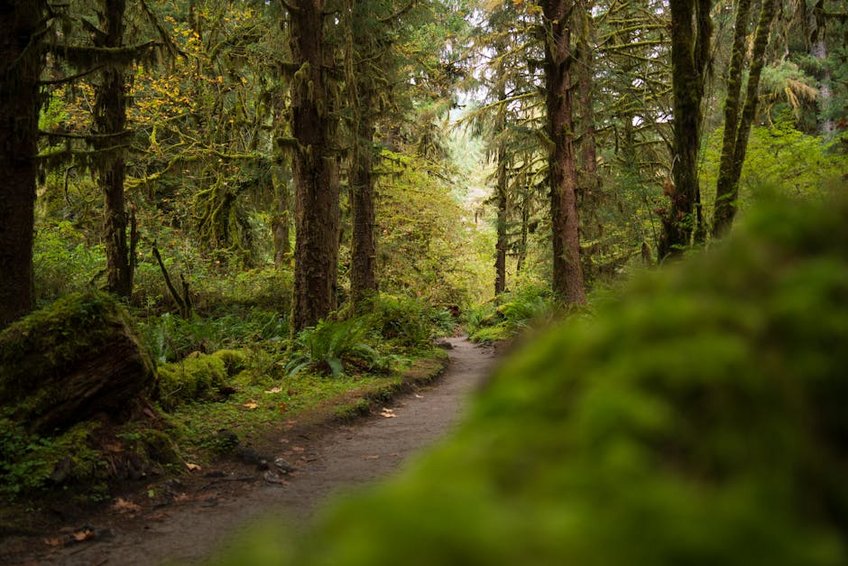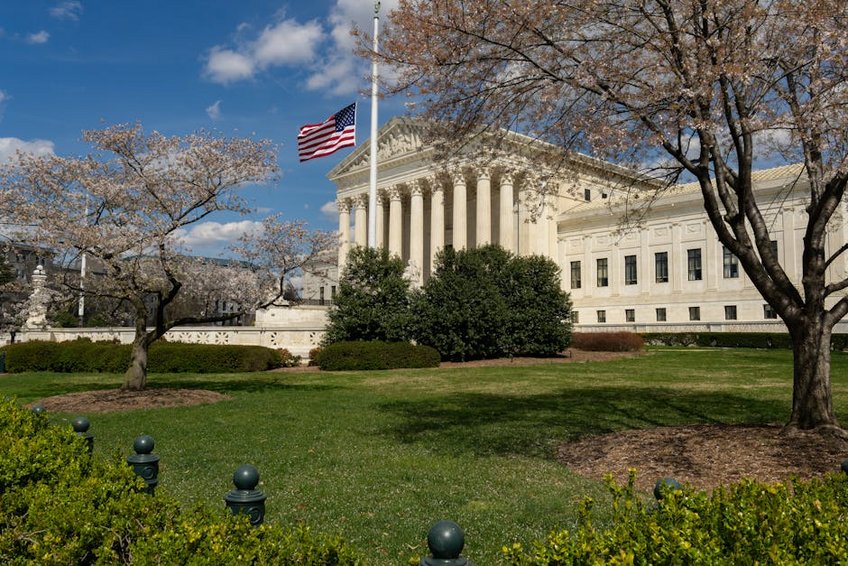Washington Olympic National Park: Explore Rainforests, Mountains, and Coastlines
Washington Olympic National Park encompasses nearly one million acres across three distinct ecosystems, from temperate rainforests receiving 140 inches of annual rainfall to glacier-capped peaks rising 7,980 feet and wild Pacific coastlines dotted with sea stacks. This UNESCO World Heritage site and International Biosphere Reserve protects ancient forests where Sitka spruce trees reach 300 feet tall, alpine meadows bloom with wildflowers from June through August, and tidal pools reveal colorful marine life during low tide cycles. Our guide covers essential trip planning details, must-see attractions across the park’s four main regions, and practical advice for navigating this diverse Washington wilderness experience efficiently.
Olympic National Park Essential Information
Established in 1938 by President Franklin D. Roosevelt, Olympic National Park spans the Olympic Peninsula in northwest Washington state, approximately 2.5 hours by car from Seattle via the Bainbridge Island ferry crossing. The park’s unique geography creates dramatically different climate zones, with the Hoh Rain Forest receiving 12-14 feet of precipitation annually while the northeast rainshadow area near Sequim averages just 16 inches yearly. This variation means visitors can experience dripping rainforest environments, subalpine wildflower displays, and rugged coastal beaches all within a single day’s exploration when planning routes carefully.
Park Regions and Ecosystems
Understanding the park’s layout helps maximize your visit across its diverse landscapes.
- The Pacific Coast region features 73 miles of wilderness shoreline with accessible beaches like Rialto Beach’s Hole-in-the-Wall rock formation and Kalaloch’s Tree of Life root system exposed in a bluff.
- The Temperate Rainforest area includes the Hoh, Quinault, and Queets River valleys where moss-draped bigleaf maples create cathedral-like environments under 500-year-old conifer canopies.
- The Mountain Region centers around Hurricane Ridge at 5,242 feet elevation, offering panoramic views of the Olympic Mountains and access to subalpine wildflower meadows from July to September.
- Budget travelers spending $60-100 daily can camp at park campgrounds like Mora or Hoh for $20-24 nightly, prepare their own meals, and focus on free ranger programs and hiking trails without guided tours.
- Mid-range visitors allocating $150-250 per day can stay at gateway motels in Port Angeles or Forks for $120-180 nightly, enjoy restaurant meals, and join guided kayaking tours on Lake Crescent for $65-85 per person.
- Luxury experiences costing $300-500 daily include stays at historic park lodges from $250-400 nightly, multi-day guided backpacking trips at $150-200 daily, and private wildlife viewing tours along the Pacific coastline.
- National Park Service – Olympic National Park
- Olympic Peninsula Tourism Commission
Climate and Seasonal Variations
Olympic National Park experiences four distinct seasons with significant regional climate differences affecting travel plans. Summer temperatures range from 45-75°F (7-24°C) in lowland areas with July and August providing the driest conditions ideal for hiking, though coastal areas remain foggy and cool with highs around 60°F (16°C). Winter brings heavy snowfall above 3,000 feet elevation from November through April, with Hurricane Ridge receiving 30-35 feet annually while rainforest valleys maintain 40-50°F (4-10°C) temperatures with frequent rainfall.
Conservation and Park Regulations
The National Park Service implements specific regulations to protect Olympic’s delicate ecosystems and wildlife populations, including mandatory bear canisters for backcountry food storage in all areas above 3,500 feet. Wilderness permits are required for all overnight camping outside developed campgrounds, with quotas limiting access to popular areas like the Enchanted Valley and Seven Lakes Basin from May through October. Leave No Trace principles apply throughout the park, with special attention to protecting tidepool organisms by not removing anything and walking carefully on rocky surfaces.

Alt: “hoh-rain-forest-moss-draped-maples-washington-olympic-park”
Washington Olympic National Park – Planning Your Trip
Your Washington Olympic National Park adventure requires careful preparation due to the park’s vast size, limited cell service outside gateway communities, and dramatically different weather conditions across elevation zones. Reserve accommodations 3-6 months in advance for summer visits, especially for popular lodges like Lake Crescent Lodge and Sol Duc Hot Springs Resort that book completely from June through September. Purchase your America the Beautiful Annual Pass for $80 online before arrival, covering entrance fees for all passengers in a single vehicle and valid at all national parks for twelve months from purchase date.
Best Time to Visit Olympic National Park
Visit between late June and early September for optimal weather conditions across all park regions, with daytime temperatures averaging 65-75°F (18-24°C) in lowlands and 55-65°F (13-18°C) at higher elevations. July and August offer the most reliable access to Hurricane Ridge and other high-elevation areas, though these months also bring peak crowds requiring earlier arrival at popular trailheads before 8 AM. Shoulder seasons in May-June and September-October provide fewer visitors and vibrant spring wildflowers or fall foliage, though some high-elevation roads and trails may remain closed due to snow.
Budget Planning and Costs
Olympic National Park visits span various budget levels depending on accommodation choices and activity preferences.
Essential Preparation Checklist
Pack layered clothing systems including waterproof jackets and pants, moisture-wicking base layers, and insulated mid-layers for temperature fluctuations between coastal, rainforest, and mountain environments. Bring multiple pairs of broken-in hiking boots or shoes, with waterproof models essential for rainforest trails and sturdy ankle support needed for rocky coastal areas and mountain paths. Download offline maps via the National Park Service app, carry paper maps as backup, and verify road conditions through the park’s automated information line at (360) 565-3131 before departure.
Top Attractions and Activities
Olympic National Park’s diverse landscapes offer endless exploration opportunities from easy roadside viewpoints to multi-day wilderness treks through old-growth ecosystems. The park maintains over 600 miles of trails ranging from accessible 0.5-mile rainforest loops to challenging 20-mile backpacking routes gaining 4,000 feet in elevation. Ranger-led programs operate daily from June through September, including guided tidepool explorations at Kalaloch’s Beach 4, twilight owl prowls in the Hoh Rain Forest, and alpine wildflower identification walks at Hurricane Ridge.
Must-See Highlights
Hurricane Ridge delivers breathtaking 360-degree views of the Olympic Mountains from its visitor center at 5,242 feet, accessible via a 17-mile paved road from Port Angeles with parking limited to 175 vehicles during peak hours. The Hoh Rain Forest features the Hall of Mosses Trail, a 0.8-mile loop through cathedral-like groves of ancient Sitka spruce and western hemlock draped with club mosses that glow emerald green in filtered sunlight. Rialto Beach’s 1.5-mile hike to Hole-in-the-Walk reveals dramatic sea stacks, tidal pools filled with anemones and starfish, and possibly migrating gray whales during spring and fall months.
Hidden Gems and Local Favorites
Sol Duc Falls remains slightly less crowded than other major attractions while offering a spectacular 1.6-mile roundtrip hike through old-growth forest to a triple waterfall cascading 48 feet into a narrow canyon. The Quinault Rain Forest’s Valley of the Giants Trail showcases some of the park’s largest western red cedar trees, including the 1,000-year-old Big Cedar measuring 55 feet in circumference near the North Shore Road. Second Beach near La Push requires a 0.7-mile forest hike to reach a stunning crescent of sand dotted with sea stacks and excellent sunset views, with overnight camping permitted above the high tide line with a wilderness permit.
Water Activities and Coastal Exploration
Lake Crescent’s crystal-clear waters offer exceptional kayaking and paddleboarding opportunities from the Log Cabin Resort, with equipment rentals available from $25-40 hourly and guided tours exploring the lake’s 624-foot depth. The Ozette Triangle combines 9 miles of coastal hiking with boardwalk trails through coastal forests, featuring ancient Makah petroglyphs at Wedding Rocks and possible seal sightings on offshore islands. Ruby Beach provides the park’s most photographed sunset location with its distinctive sea stack formations and reddish sand composed of garnet fragments, accessible via a short 0.2-mile trail from the parking area.
Practical Travel Information
Navigating Olympic National Park requires strategic planning due to its size and limited through roads, with the 330-mile loop around the peninsula taking approximately 8-10 hours without stops. Most visitors base themselves in gateway communities like Port Angeles for mountain access, Forks for coastal exploration, and Lake Quinault for rainforest experiences, driving 1-2 hours between regions. Reserve rental cars early from Seattle-Tacoma International Airport, preferring SUVs or vehicles with higher clearance for some park access roads like the rough 8-mile gravel road to Obstruction Point.
| Accommodation Type | Location and Features | Price Range (USD) |
|---|---|---|
| National Park Lodges | Historic properties like Lake Crescent Lodge with lakefront cabins and dining rooms | $180-400/night |
| Gateway Town Motels | Port Angeles and Forks locations with basic amenities and park access | $90-160/night |
| Vacation Rentals | Private cabins throughout peninsula with kitchens and multiple bedrooms | $150-300/night |
| Campgrounds | Park-operated sites like Kalaloch with ocean views and reservation systems | $20-24/night |


